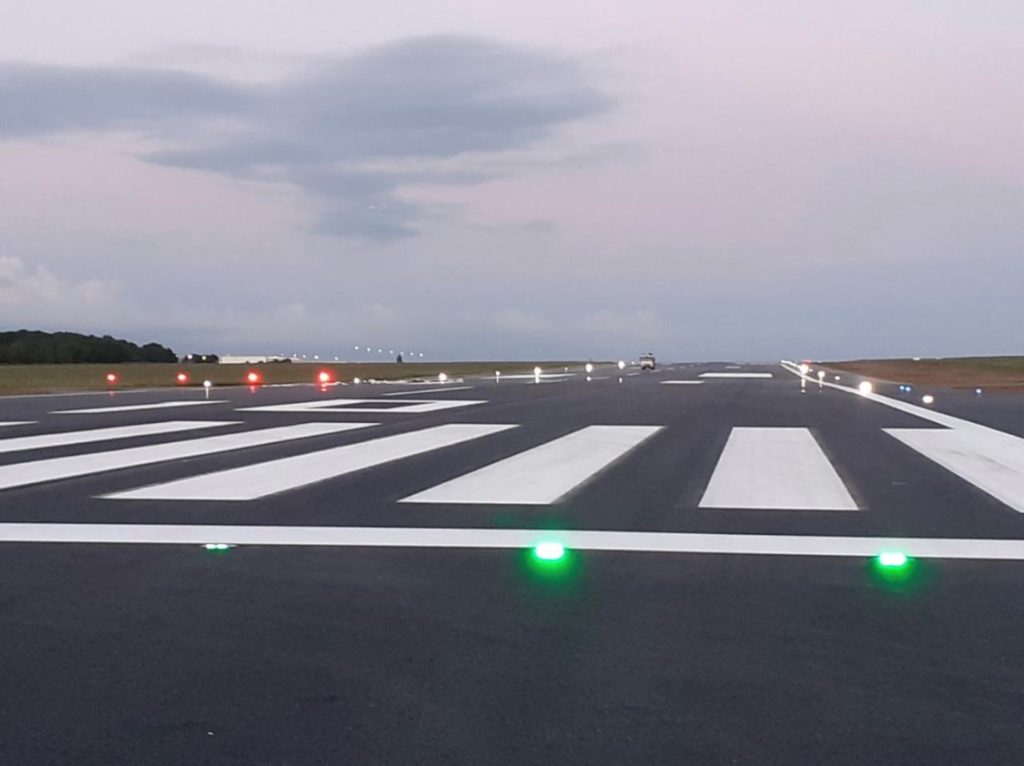
More than in other industries, the role of airfield lighting maintenance is key to guaranteeing continued operations. In this blog post we have an in-depth look into the role of maintenance on airport operations and why maintenance is so important, not only to guarantee safety but, also to save major cost impacts and flight interruptions by closing runways for urgent repairs or maintenance.
A great installation goes a long way.
Everything starts with a great design, and that means that before any runway or taxiway is build, the plans for the same are really critical. A good designer looks into all aspects, from where to locate the runway and taxiway (to benefit from all meteorological conditions and prevent noise pollution to name but a few), to the regulatory requirements. Regulatory requirements that need to be addressed indicating what visual guidance elements belong where, and where manholes and access pits should be designed to carry all the cabling, to power and control the lights and all other equipment elements. In many cases, designs have been done poorly or environments have changed by which pits are constantly under water and thus negatively impacting the lifetime of the cable infrastructure. Even with a great maintenance approach, a faulty design cannot be compensated for.
A clear maintenance regime set up by experts.
Just like you only trust doctors to look into your health, you don’t leave maintenance up to anyone that has no experience nor has ever been on an airfield.
To understand what is really needed to set up a good maintenance regime you need to add the great maintenance principles in the FAA’s advisory circular 150/5340-26 which outlines the following main elements for airports when it comes to maintenance:
Maintenance Plan: All Good Maintenance Programs start with a plan. The plan should include the daily to annual preventive maintenance tasks that need to be performed to keep the airfield in tip-top shape. An especially important part of the plan should document what to do when something goes very wrong. Questions need to be addressed such as training of personnel, equipment, tools, and spare parts programs that should be in place.
Manufacturer Relationship: Besides the FAA’s advice, it is key to note that a good relationship with a quality manufacturer is indispensable when undertaking any airfield maintenance. This relationship can be a valuable tool to have in your toolbox. They can help you with advice and spare parts to get you up and flying or landing again.
Now that we understand the basics for the maintenance of an airfield, let’s not forget to talk about the importance of preventive maintenance.
The role of Preventive Maintenance.
As in any industry, the role preventive maintenance plays in keeping operations running, is critical, but unlike in many industries, bad or underperforming maintenance can have an immediate impact on the safety of passengers, pilots, and everyone working on the airport. This makes the role of preventive maintenance key since what an airport needs to avoid at any price is the unexpected preventable closure of one of its runways. This impacts directly the revenues of the airport but one could also question the reputation of how serious the airport is about safety.

So how can preventive maintenance avoid runway closures and avoid emergency showdowns?
Let’s first understand what preventive maintenance is about.
The goal of a successful preventive maintenance program is to establish consistent practices designed to improve the performance and safety of the equipment at your property. Moreover, the planned maintenance of equipment will help to improve equipment life and avoid any unplanned maintenance activity.
It goes without saying that preventing equipment or systems from going down is the key aspect that comes out of a good preventive maintenance program. Many airports have now added preventive maintenance to their approach, and some have automated a lot of their maintenance activities. This means they have set up a system that records and documents the state of every light at any given time, together with all other data on the light (brand, type, production data,…), so they understand:
- When what light or system was last maintained.
- The result of the maintenance activity?
- When the next maintenance interval should be scheduled?
This information also helps them detect trends like what light fails and whether this is a one-off failure or whether the entire series of lights is suffering from the same issue. What goes for an airfield light also goes for all other systems that impact visual guidance. The positive impact of preventive maintenance (PM) can be calculated by using the net present value, or NPV, and is calculated by comparing repair, energy, and replacement costs for PM and costs of non-PM scenarios, whereby it will soon be clear that non PM costs normally outweigh the PM costs. Furthermore, the PM costs can be planned easily while non PM costs require last-minute interventions, and potential closures because of failing equipment.
An additional benefit to preventive maintenance is the familiarization of members of personnel with the equipment. As with a wellness exam by your medical doctor, the doctor gets to know you when you are healthy which helps them identify when there is a real problem.
MULTI ELECTRIC & Maintenance
At MULTI ELECTRIC we focus on the easy maintainability of our lights as we know how important this is in the operations of any airport.
Less spare parts needed, easy maintenance, and longer lifetime contribute to any airport’s bottom line and the goal of 24/7 availability. This is why in our designs we consider maintenance one of the key elements. Of course, being the best at what we do, through our designs, our experience, and our experts makes the users experience a happy one. A good example of our quality can be seen in our approach systems, several systems have been in place since the nineteen sixties including at one of the US busiest cargo airports. While we do not guarantee that all our lights will last for 60 years, we can be proud of the quality of our products that – with an appropriate maintenance regime – can outlast most of our competitors’ products.
Questions? Contact us at sales@multielectric.com